The use of gabions in landscape design

This article will focus on gabions - very unusual devices for creating all kinds of architectural structures, which have recently become increasingly popular with owners of summer cottages and backyards. We will tell you how gabions are used in landscape design, introduce them to their types and features, and also give advice on self-assembly of such structures.
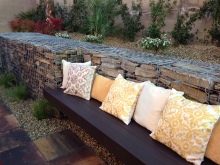
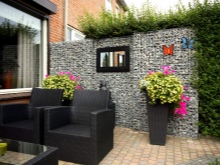
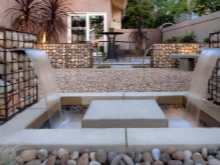
What it is?
First of all, let's dwell a little on the history of gabions. The word itself, translated from Italian, means "big cage" and is far from new. It is known that the great Italian architect, artist and inventor Leonardo da Vinci designed a structure to strengthen the foundations of a church in Milan. This design was the prototype of modern gabions. Later, the idea of stuffing wicker mesh baskets with stones, earth and tree branches was adopted by the military for the construction of fortifications. Such baskets were used during the Napoleonic wars and in the Crimean battle: these barriers saved soldiers from bullets and shells.

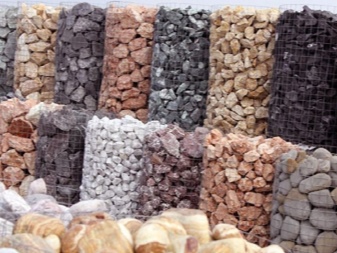
Currently, gabions are widely used in landscape design. Filled with stones, colored glass, fragments of pottery and wood cuts, mesh containers are an expressive tool for creating large and small architectural forms.
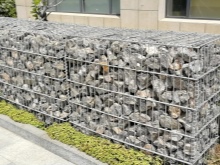

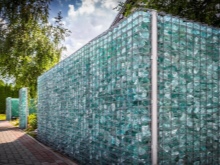
Peculiarities
Gabions are very popular with garden architecture lovers, primarily due to a number of attractive properties.
- This is a fairly budgetary way of ennobling the natural landscape in comparison with many other options. When building and arranging territories, you do not need to involve expensive equipment.
- The frame material used has high plasticity, such structures are able to fit into any landscape, repeating its outlines.
- Gabions are highly durable, since they are made of double-twisted galvanized metal wire, and for more serious tasks, for example, to strengthen the coastline, gabions are made from welded nets. Over time, the strength of the products only increases due to subsidence in the ground and growth of the roots of ornamental plants planted in the intervals between the filler.
- When installing gabions, there is no need to arrange drainage - the stone placer itself is a drainage system, perfectly absorbing water and at the same time not collapsing.
- Such architectural forms do not require maintenance and restoration - of course, if all the work on their installation was carried out in compliance with building codes.
- Due to the special strength of the structure, such structures serve for a very long time.
- Gabions give the impression of a monolith, at the same time they are perfectly air-permeable.
- These decorative designs are made from natural materials, therefore they are environmentally friendly, which is currently in high demand among people who are serious about leading a healthy lifestyle.
- Gabions have an aesthetic appearance, making the landscape unique and picturesque. With their help, you can create real masterpieces of garden architecture; they enhance the well-groomed feeling of the site.With volume and texture, they look great against smooth surfaces such as straight mowed lawns, pebbled paths or paved paths.
Gabions go well with green plants, flowers, and other materials such as wood and metal.


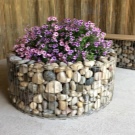
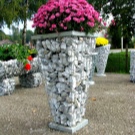
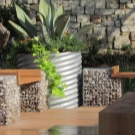
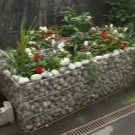
Nevertheless, these peculiar decorative elements may have negative sides that should be borne in mind when designing the design of your summer cottage.
- Gabions often look too bulky and may not fit into very tight spaces. Although in this case, the creation of small architectural forms, such as small vases or borders for flower beds, may be an appropriate option.
- Due to their design, using gabions is the easiest way to create rectangular shapes. Deviations from this rule entail significant financial investments.
- When building large structures, there is a need to resort to the services of specialists: it is simply unrealistic to cope with such an installation yourself.
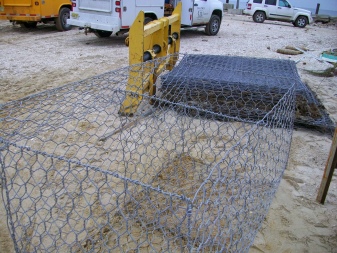
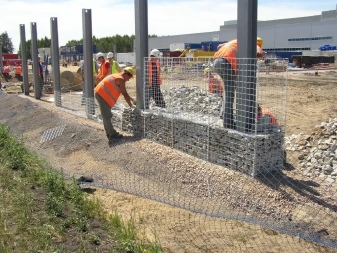
Views
There are three main types of gabions: rectangular (box-shaped, Jumbo), cylindrical and mattress-mattress (Renault). There are also free-form gabions, with the help of which they create original elements of landscape design. Which of these types this or that gabion belongs to depends on its purpose and design, since these structures can perform both decorative and economic functions, or combine both.
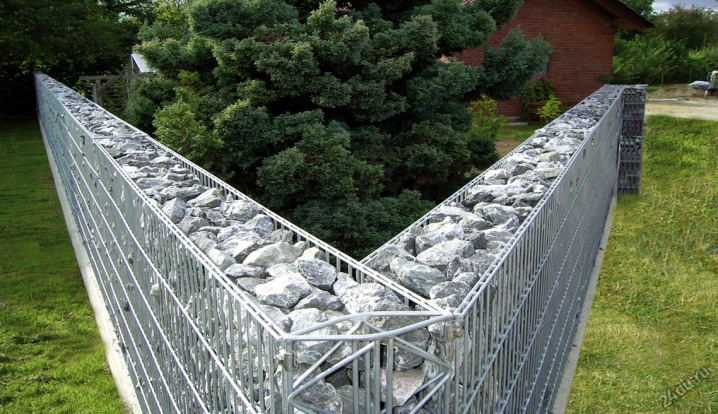
Cylindrical
Another name for cylindrical gabions is gabion bags... These mesh structures are used in the interior to create decorative elements such as supports and columns. Ponds are decorated with cylindrical gabions.
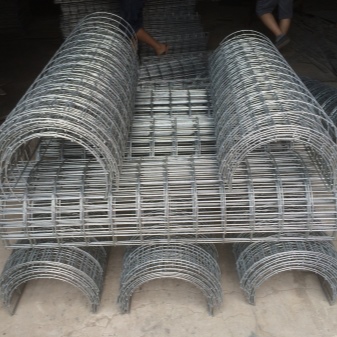

Rectangular
These parallelepiped-shaped containers usually consist of steel rods welded together to form a grid. It is this type of gabion that is still used to strengthen roads, slopes and bridges, with the help of which they build high fences and retaining walls. Rectangular containers have a width to height ratio of 2: 1. In fact, the dimensions of rectangular gabions depend on the purpose.
To ensure better strength, internal partitions are installed in such containers.
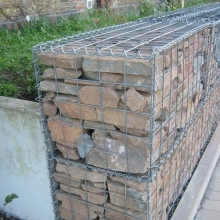
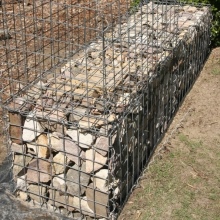
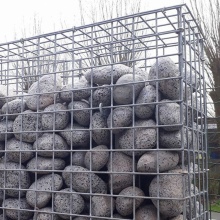
Mattress-mattress
Mattress designs are also called Reno mattresses in honor of a memorable event in Italywhen the inhabitants of the city of Bologna prevented a flood on the river of the same name with the help of structures of this shape. Then gabions were first used to strengthen river banks. Since then, mattress and mattress structures have been used in landscape design to level the banks and bottom of reservoirs.
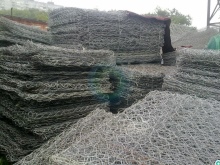
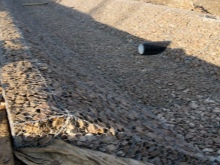
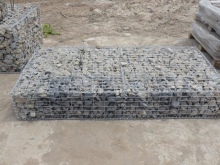
Free form
Free form gabions provide great opportunities for green architectshelping to create truly unique shapes and sculptures. Due to their plasticity, such designs help to set off the beauty of green spaces and the well-groomed lawn, as well as refine the garden beds. Here, a wide scope opens up for the realization of the most daring fantasies, because such gabions can have absolutely any shape and size: from a metal frame in the form of a ball filled with natural stone to an artistically executed statue of a person or an animal, also filled with stone, rubble, wood or glass.
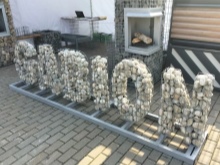
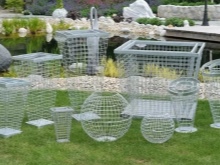
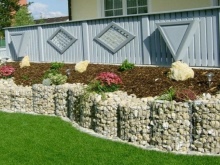
Ideas for using gabions
Gabions are used in landscape design for arranging a backyard area or a summer cottage. With the help of them, you can erect strong, but at the same time elegant barriers, highlight functional areas, make beautiful curbs, gazebos, stairs, garden furniture and much more.
Gabions frame paths and ponds, individual plants and flower beds, create stands for garden lamps, graceful arches, columns and pedestals.

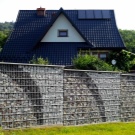
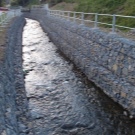
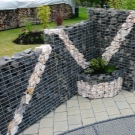
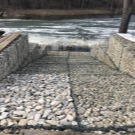
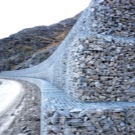
Shapes
Gabion sculptures installed in the garden will give zest and a unique style to the summer cottage. These figures can be made in the form of a variety of decorative compositions: fantastic animals and birds, snails, geometric and abstract forms, and even people.
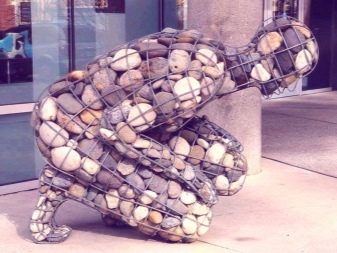

Furniture
The original decoration of the garden will be gabion garden furniture such as benches and tables. When creating these interesting objects, builders use a combination of different materials such as stone and wood, ceramics and glass.

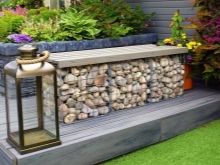

Walls and fences
Form and materials gabions are ideal for building fences with which you can enclose the entire area or alternate stone walls with wooden or metal trellises and even beautifully growing green plants such as thuja or blue spruce.
Gabions are used to build whole walls, they are laid out uneven areas, giving them a strict regular shape, so such products are perfect for arranging stairs in a natural style, for example, leading to a reservoir.
Gazebos made of gabions look beautiful, the size and architecture of which can be infinitely varied.
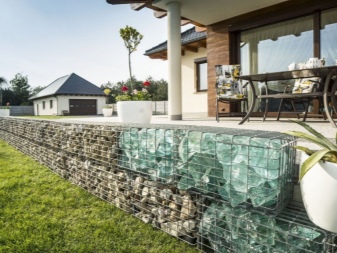
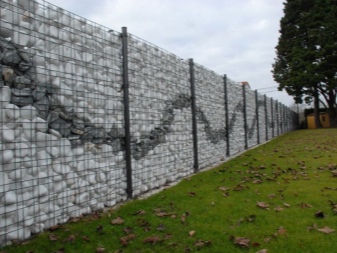
Mangal zone
On summer cottages and personal plots, the zones look very beautiful for barbecues and barbecuesmade of smooth mesh structures filled with stones. Fans of Asian cuisine build a tandoor from gabions, in which they bake fragrant flat cakes and treat them to their guests.
Fireplaces and open-air stoves constructed of wire frames with stone filler also look unusual and interesting.
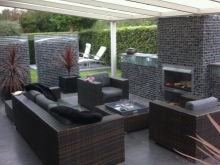
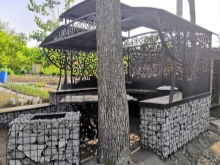
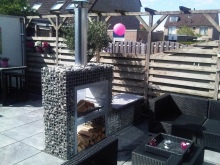
Curbs and flower beds
Curbs along paths and flower beds made of gabions are an excellent and original solution for arranging a garden plot in the country. The beds look very aesthetically pleasing, lined with mesh containers with natural materials placed inside, such as cobblestone, gravel and small, evenly sawn wood logs.
You can fence off the front garden using rectangular structures in combination with beautiful flowers and greenery of plants.
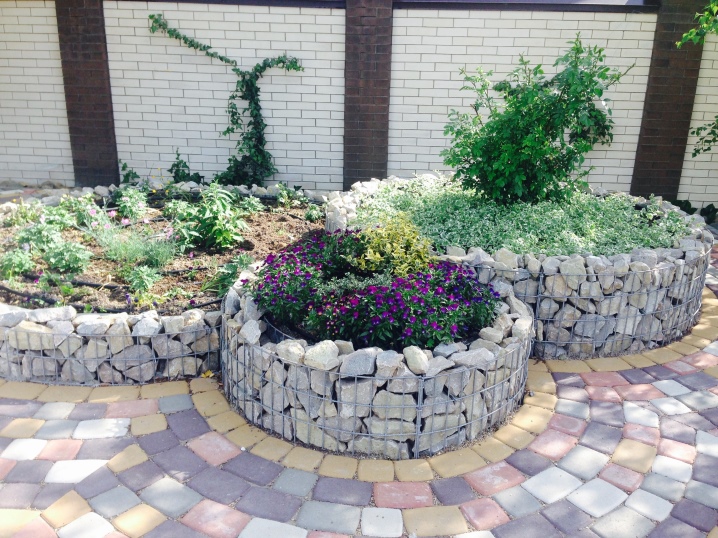
Water bodies
Using mattress gabions strengthen the bottom of makeshift ponds, rectangular gabions are great for leveling, finishing and strengthening their banks. Artificial islets of gabions, decorated with green plants, conquer with their natural beauty.
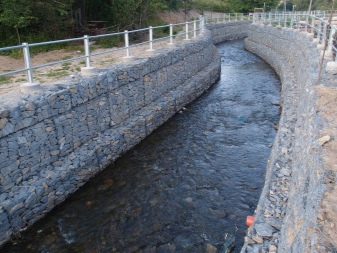

Installation tips
You can purchase ready-made gabions or assemble them yourself.
- To begin with, draw a schematic plan of your site, highlighting the construction area, and draw a drawing of the gabion structure in the right place.
- Next, you should clear the place for construction and level the site.
- After that, you need to dig holes, install supports and concrete them.
- We fasten the gabion frame to the supports and fill it with the selected material up to about half.
- The filler can be large fragments of stones, wood and metal bars, cones, bark and even glass bottles.
- Be sure to tighten the opposite walls of the structure with special hooks - this will give it the necessary rigidity.
- After the container is completely filled, we re-tighten the walls and fix the lid on top.
You can put a layer of lumpy glass inside the frame and mount LED backlighting. Such a product will look simply enchanting in the darkness of the night.
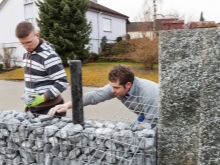

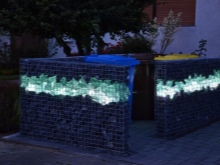
Beautiful examples
This is what the various architectural landscape design elements made from gabions look like.
- Retaining wall made of gabions.
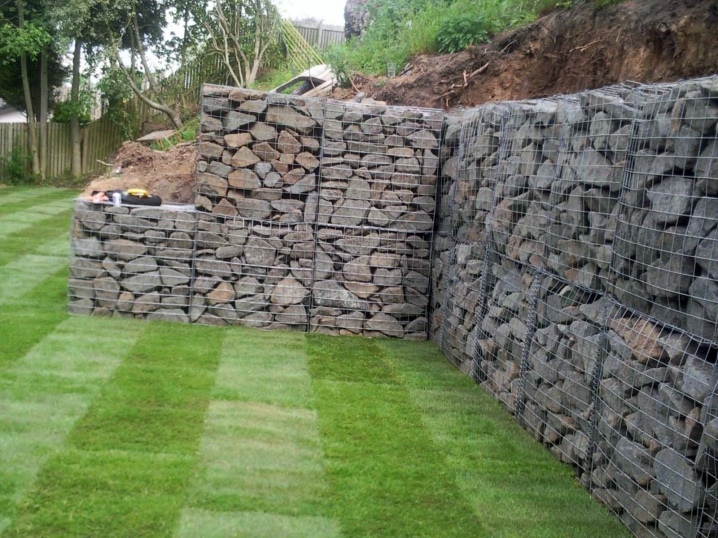
- Decorating the banks of a stream from gabions in the country.
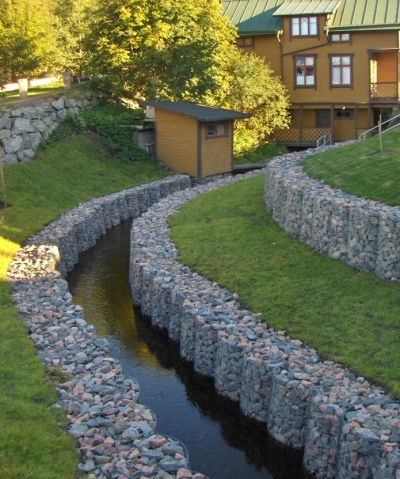
- An ornament on a decorative wall made of stones of different colors.
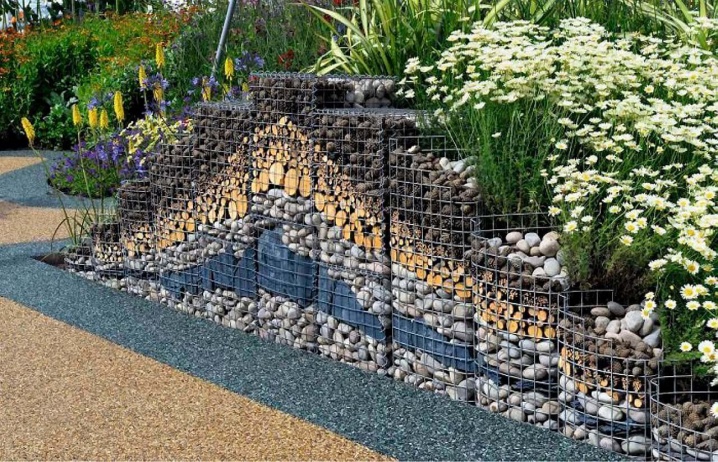
- Gabions with glass.
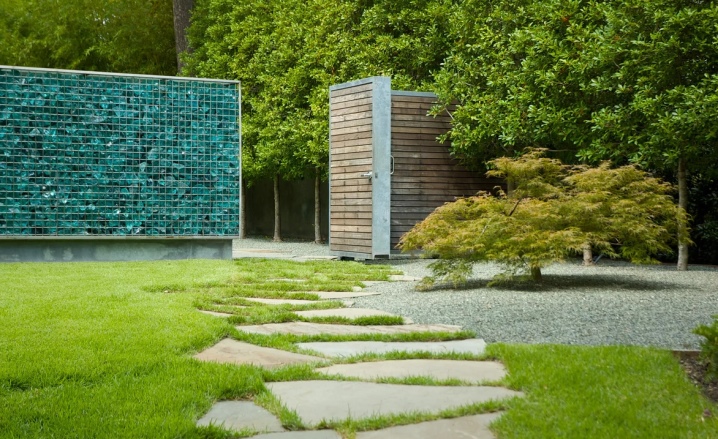
- Bench in the garden.
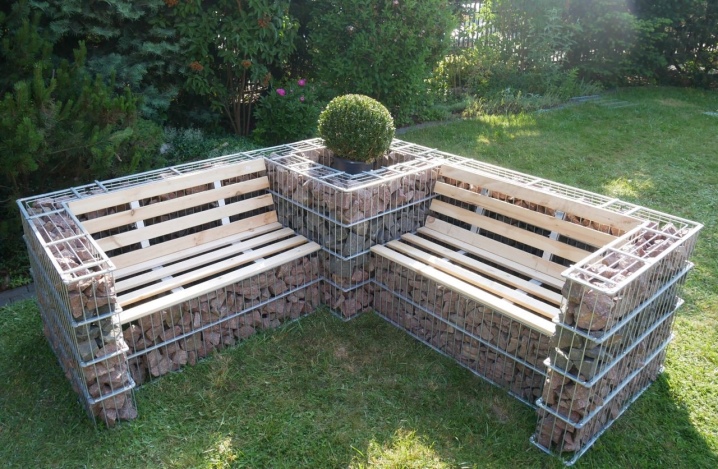
- "Snake".
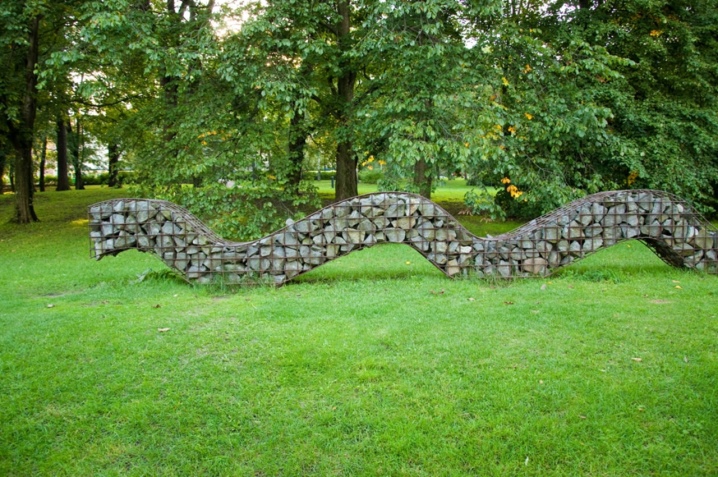
- Ball gabion with lumpy glass.
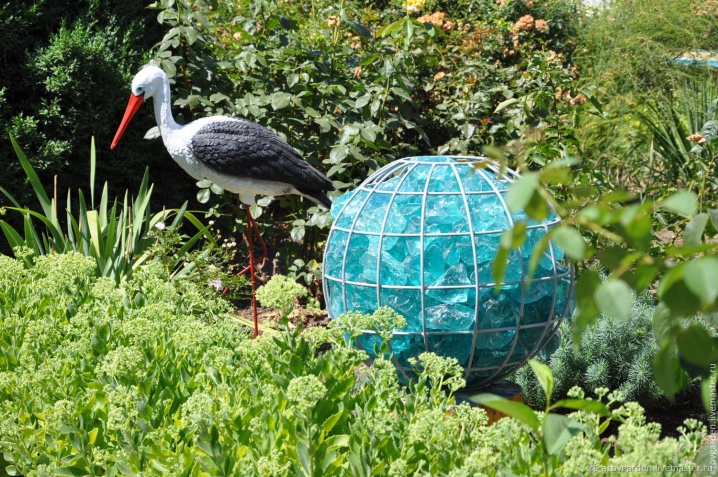
How to make a gabion with your own hands, see below.






























































The comment was sent successfully.